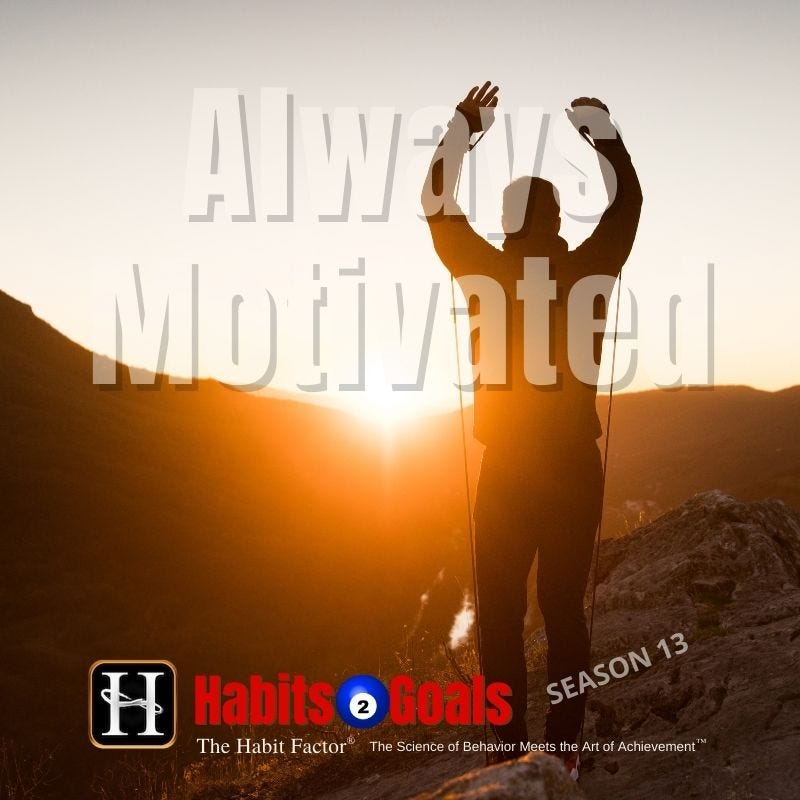Jan 27 2025 20 mins 1
“Where there is behavior, there is motivation."
“Motivation is what gets you started. Habit is what keeps you going.” ~Jim Rohn
Ever thought, “I’m just not motivated”?
Here’s the truth: You’re always motivated.
Motivation is simply behavior—a movement toward a goal.
For better or worse, that goal might be to sit on the couch and watch football.
The point is, you’re still motivated—just not toward what may matter most.
The distinction is simple: One moves you toward your goals and ideals. The other pushes you away and delays them.
The first is a decision to move through difficulty and temporary pain. The latter is a quick fix—an escape toward immediate pleasure.
These two—pleasure and pain—are the monster pillars of human behavior.If we’re not careful—if we’re unaware—pleasure almost always kicks pain’s ass.
Until habits are cultivated, pleasure is almost always the default setting.
It’s the easy, comfortable path—but it’s also a vote to delay your goals.
Challenging behavior? That’s different. Every time you take it on, you’re casting a vote to fast-track your growth and get closer to your ideals.
After all, this is why we call it discipline—it hurts.
As soon as we recognize these two polar forces at work, we can address them.
Ignoring that tough email, avoiding that difficult conversation, or skipping the gym? Chances are, that’s motivation away from pain.
To be clear, the problem isn’t a lack of motivation.
It’s understanding the motivation that’s always at work—either for or against your goals. And almost always, the path toward your goals runs through pain.
The good news: a little awareness changes everything.As soon as you recognize the forces at play, you can flip the script.
Pain becomes your ally. Discomfort is the gatekeeper.
Reframe the story. Look at what you’re motivated toward, most of the time.
The “difficult” isn’t punishment—it’s progress.
This is where habit tracking and the P.A.R.R. framework come into play.
Something shifts when you align a few key habits with your most important goals and track them.
You push through discomfort—temporary pain—and gain momentum.
You experience the feel-good chemicals: endorphins and neurotransmitters tied to self-efficacy—the ability to produce a desired result.
The magic is in the simple P.A.R.R. framework:
It turns hard “stuff” into habits and momentum toward your most important goals.
This is a public episode. If you’d like to discuss this with other subscribers or get access to bonus episodes, visit habits2goals.substack.com/subscribe
